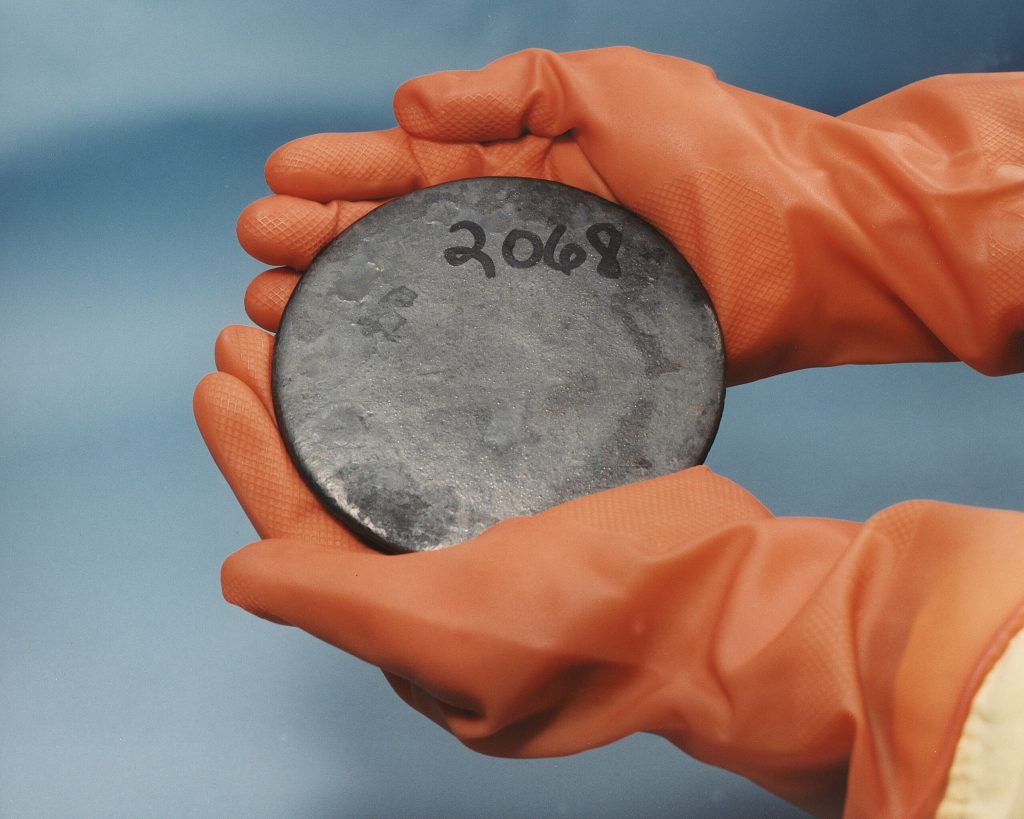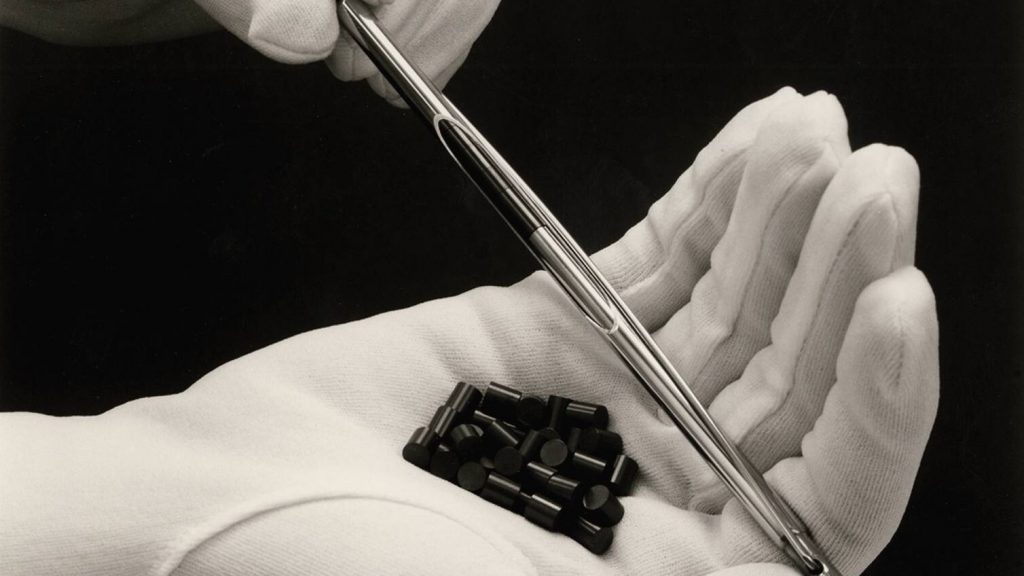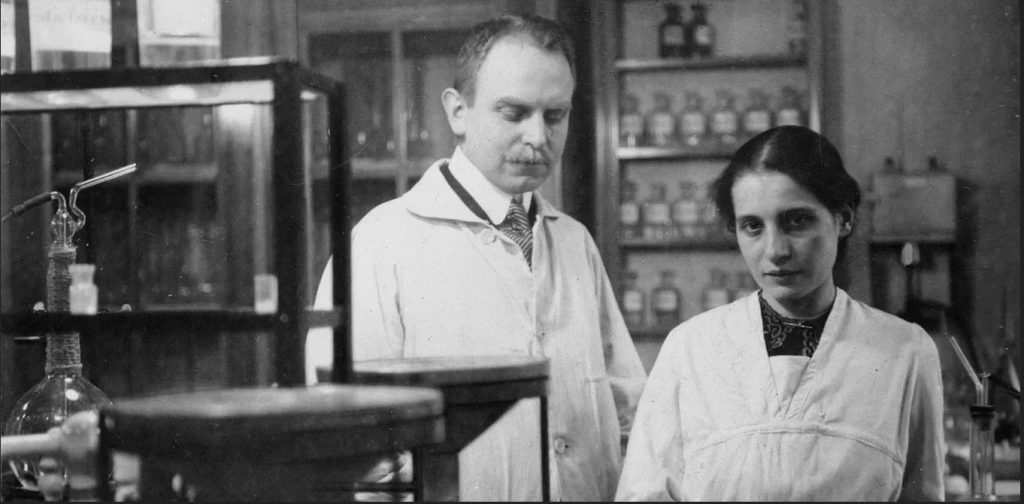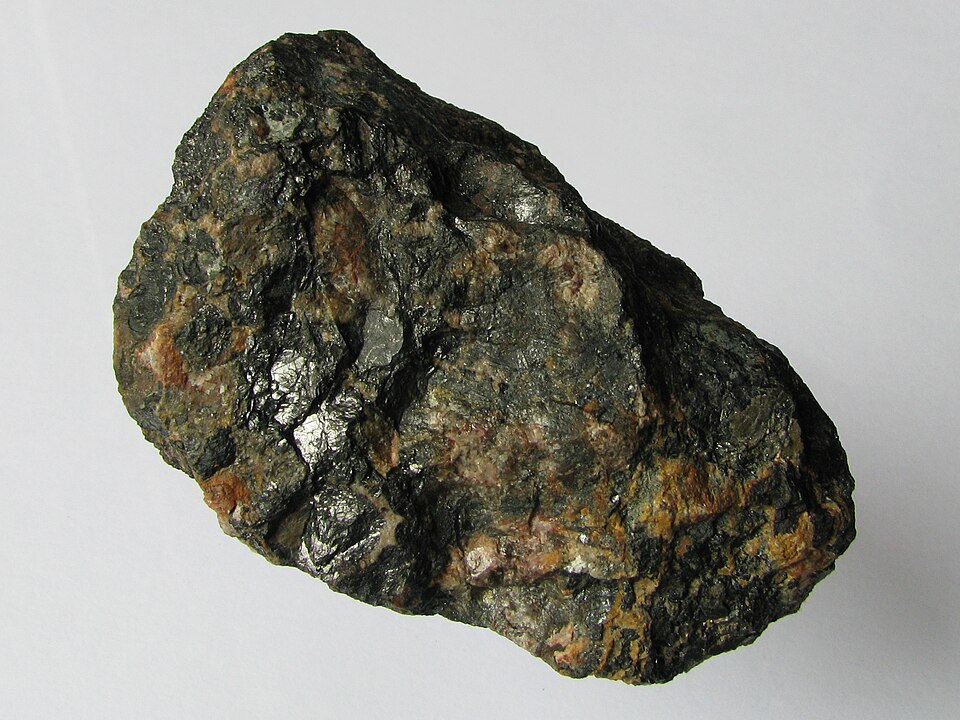What is Uranium?
Uranium is a naturally occurring chemical element with the symbol U and atomic number 92. It is a dense, slightly radioactive metal found in rocks, soil, and water across the Earth’s crust. The most common natural occurrence of uranium is in minerals such as uraninite and pitchblende, which have been concentrated into large deposits over the span of millions of years.
Uranium is known for its unique properties that make it integral to various applications, particularly in nuclear energy. The isotope U-235 is especially important because it is capable of sustaining a nuclear chain reaction, making uranium essential for generating electricity in nuclear reactors and for use in certain types of nuclear weaponry. Additionally, uranium isotopes contribute to fields like medical research and scientific exploration.

Understanding Uranium Isotopes: Their Properties and Applications
One of the defining features of uranium is its various isotopes. Isotopes are variations of an element that have the same number of protons but different numbers of neutrons. For uranium isotopes, the number of protons remains constant at 92, while the neutron count varies. This variance results in distinct physical and nuclear properties. These isotopes are crucial in fields such as nuclear energy, defence, and scientific research.
| U-238 | U-235 | U-234 | |
|---|---|---|---|
| Abundance | ~99.3% of natural uranium | ~0.7% of natural uranium | Trace amounts, forming approximately 0.0055% of natural uranium |
| Properties | Non-fissile, meaning it cannot sustain a nuclear chain reaction. However, U-238 is fertile, as it can absorb neutrons and transform into plutonium-239—a fissile material. | A fissile isotope capable of sustaining a nuclear chain reaction, making it the cornerstone of nuclear power and weapons technology. | Part of the uranium decay chain, U-234 is less prominent in practical applications but contributes to the overall behavior of enriched uranium. |
| Applications | U-238 can be used in breeder reactors to generate energy and produce plutonium. It is also valued for its density, making it an effective radiation shield and counterweight. | Due to being fissile, U-235 is used in various forms as fuel for nuclear reactors. It is also used in nuclear weapons as a primary fissile material. | Plays a supporting role in uranium enrichment and scientific studies. |
What is Depleted Uranium?
Depleted uranium (DU) is a byproduct of the uranium enrichment process, consisting mostly of Uranium-238, with most of its Uranium-235 content removed. Although less radioactive than natural uranium, DU remains chemically and physically similar, characterised by its high density and weak radiation emissions. These properties make it suitable for specialised applications across various industries.
In the military sector, DU is widely used for armour-piercing projectiles and protective vehicle armour, thanks to its density and strength. Additionally, it is employed in industrial settings as counterweights for aircraft and heavy machinery, as well as for shielding radiation in medical and industrial equipment.
What are the Uses of Uranium?
Uranium is a remarkably versatile element, and its unique properties enable it to be used in several significant and practical ways.
Nuclear Energy Production
The most prominent use of uranium is as fuel in nuclear reactors. The uranium-235 isotope (U-235) undergoes a fission reaction, releasing massive amounts of energy to generate electricity. This process powers approximately 10% of the world’s electricity supply, making it a cornerstone of clean energy efforts.
Breeder Reactors and Fertile Material
Although uranium-238 (U-238) is not fissile, it is fertile, meaning it can be converted into plutonium-239, a fissile material. Breeder reactors use this process to produce additional fuel, increasing the efficiency of nuclear resources.

Military Applications
Nuclear Weapons: U-235 and plutonium derived from Uranium-238 are used as fissile materials in atomic bombs.
Defence Technology: Depleted uranium (DU), which is uranium with reduced U-235 content, is used to make armour-piercing projectiles and protective military vehicle armour because of its high density and strength.
Naval Propulsion: Uranium powers nuclear submarines and aircraft carriers, offering extended operational capabilities without refuelling.

Scientific Research
Scientific Studies: Uranium isotopes are employed in nuclear physics research, aiding in the study of atomic particles and nuclear reactions.
Radiometric Dating: Uranium decay series are used to date rocks and fossils, contributing to geological and archaeological research.
Medical Advancements
While not directly used for treatments, uranium contributes to the creation of radioisotopes, which play a crucial role in diagnostic imaging and radiation therapy for cancer.

Space Exploration
Uranium is used in radioisotope thermoelectric generators (RTGs), which provide power for spacecraft and rovers on long-duration missions. These devices allow missions to operate in environments where solar power is not viable, such as deep space or shadowed lunar craters.
Industrial Uses
Uranium compounds were historically used in the ceramics industry to add colour to glass and glazes, although this practice has diminished due to safety concerns. It is also utilised for its density in counterweights, such as those found in aircraft or in stabilising equipment like gyroscopes.

The History of Uranium
Discovery of Uranium
The story of uranium began in 1789, when German chemist Martin Heinrich Klaproth discovered it in a sample of pitchblende ore. Klaproth named the new element “uranium” after the recently identified planet Uranus. Though its radioactive nature was unknown at the time, its distinct properties intrigued scientists for decades.
The Birth of Nuclear Physics
Uranium’s transformative role emerged in the 1890s, when physicist Henri Becquerel discovered its ability to emit radiation—marking the birth of the study of radioactivity. Building on this discovery, Marie and Pierre Curie isolated radioactive elements such as polonium and radium from uranium ores, paving the way for ground-breaking research in nuclear physics.

The Nuclear Revolution
The true potential of uranium was unlocked in the 1930s, with the discovery of nuclear fission. Physicists Lise Meitner and Otto Hahn demonstrated that splitting uranium atoms released an immense amount of energy. This finding laid the foundation for:
- Nuclear reactors that harness uranium for energy production.
- Atomic weapons, developed during World War II under the Manhattan Project. In 1945, the devastating bombings of Hiroshima and Nagasaki highlighted uranium’s unparalleled power—and its consequences.

Early Applications
During the 19th century, uranium’s initial uses were limited. Its compounds were employed in the glass and ceramics industries to produce vibrant yellow and green colours. However, these applications waned as the scientific community began to focus on uranium’s radioactive properties.
Post-War Development
After World War II, uranium gained prominence as a fuel for civilian nuclear power plants, offering a cleaner alternative to fossil fuels. The first commercial nuclear reactor began operating in 1954 in Obninsk, Russia, heralding an era of nuclear energy.
Where can Uranium be found?
Uranium is widespread across the Earth’s crust, but its concentrations vary significantly depending on geological formations and environmental factors. From rocks to seawater, uranium can be found in fascinating and diverse forms.
Natural Deposits in Rocks
Uranium is commonly found within igneous, sedimentary, and metamorphic rocks. Granite, for instance, often contains higher concentrations of uranium due to its geological characteristics. In these rocks, uranium is part of minerals such as uraninite and pitchblende, which serve as the primary ores for uranium extraction. Secondary uranium minerals, including autunite, torbernite, and carnotite, are formed through oxidation processes and are vital for mining.
Economically viable uranium extraction occurs within specific geological formations.
- Sandstone-hosted deposits: Uranium is concentrated in porous sandstone layers through the movement of uranium-rich groundwater.
- Vein deposits: Found in fractures or cracks within rocks, these deposits often coexist with other minerals like gold.
- Surficial deposits: Uranium occurs in surface layers such as soil, calcrete, and other shallow geological formations.

Uranium in Soil and Water
Beyond rocks, uranium exists in trace amounts (approximately three parts per billion) in soil and water. It leaches from rock formations into groundwater and surface water, where it is dissolved. Due to the very low concentrations, extracting uranium from these sources is not yet commercially viable.
World Uranium Mining Production
The largest uranium-producing countries in the world include Kazakhstan, which leads global production with its vast sandstone-hosted uranium deposits. Canada follows closely, known for its high-grade uranium reserves in the Athabasca Basin. Australia is another key player, with significant uranium resources at sites like Olympic Dam and Ranger mine. Namibia contributes substantially to global output through major mines like Rossing and Husab, while Uzbekistan is an emerging leader in uranium production.
What are the effects of Uranium exposure?
Uranium exposure can have various effects on human health, depending on the level and duration of exposure, as well as the form of uranium encountered.
Chemical Toxicity
Uranium is chemically toxic when ingested or inhaled in significant amounts. It primarily targets the kidneys, as they filter out uranium from the bloodstream. Prolonged exposure can result in kidney damage or dysfunction. At low levels (like natural uranium in drinking water), the risk of kidney toxicity is minimal.
Radioactivity Concerns
While uranium is weakly radioactive, prolonged exposure to its radiation can damage DNA and increase the risk of cancer, particularly lung cancer for those inhaling uranium dust. Uranium’s radioactive decay also produces radon gas, which poses additional health risks when inhaled.
People working in uranium mining, processing, or handling industries face higher exposure risks. Strict safety protocols, such as protective gear and ventilation systems, are essential to limit health impacts.
Explore Further
Choose from the articles below to continue learning about nuclear.
Nuclear Reactor Generations – A Story of Innovation and Improvement
Lead-cooled Fast Reactor (LFR) – from Metal to Megawatts
Nuclear Cooling Tower – An Icon of Nuclear Energy
Did you know? Explore Nuclear also offers great careers information and learning resources.
Below you can find references to the information and images used on this page.
Content References
- What is Uranium? | IAEA
- What is Uranium? How Does it Work? – World Nuclear Association
- Uranium – Wikipedia
- A guide: Uranium and the nuclear fuel cycle – World Nuclear News
- Uranium: Facts about the radioactive element that powers nuclear reactors and bombs | Live Science
- Uranium mining – Wikipedia
- Uranium | Definition, Properties, Uses, & Facts | Britannica
- World Uranium Mining Production – World Nuclear Association
Image References
- Nuclear Fuel Pellets & Rod – United States Department of Energy – Public domain
- Enriched Uranium – Unspecified – Public domain
- Fuel Assembly – Free to Use
- HMS Ambush Returning to HMNB Clyde – CPOA(Phot) Thomas McDonald – OGL v1.0
- SNAP-3B – Mound Photography – Public domain
- Becquerel plate – Henri Becquerel – Public domain
- Hahn and Meitner in 1912 – Unknown author – Public domain
- Uranium Cubes – ENERGY.GOV – Public Domain
- Pitchblende & Coffinite Uranium Ore – Jędrzej Pełka – Public Domain
- Underground at Danescombe Mine – Des Blenkinsopp – CC BY-SA 2.0
- Pitchblende Uranium Ore – Geomartin – CC BY-SA 3.0
